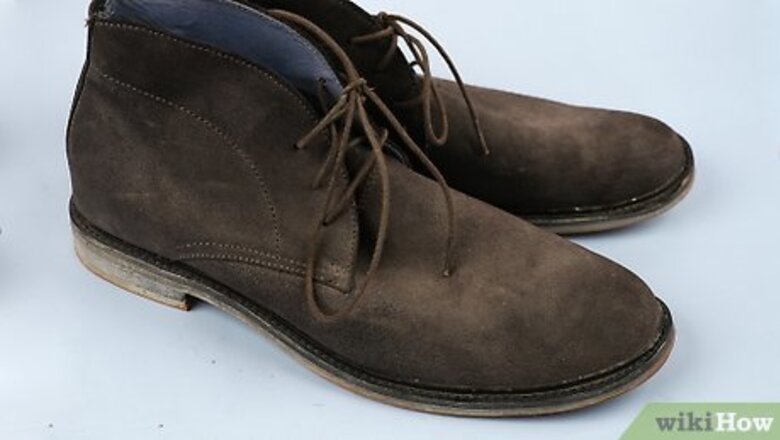
views
X
Research source
Luckily, there are a lot of simple ways to add texture to the bottom of your shoes and improve their grip and traction. Keep reading to learn how to make any type of shoe less slippery, from heels to boots!
- Scuff the soles and heels of your shoes on concrete (or with medium-grit sandpaper or a nail file) to add texture that helps prevent you from slipping.
- Or, spray the bottom of your shoes with hair spray for a temporary solution that helps your shoes stick to the ground.
- Alternatively, attach grip pads to your soles and heels to improve your shoes’ traction.
Scuff your soles on sandpaper.
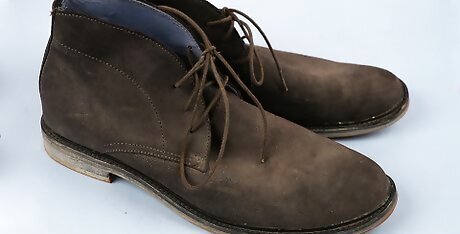
Smooth soles can lead to slips and falls, whether you have a perfectly new pair of shoes or an old pair that is worn down. So, simply walk or brush your shoes against a rough surface like concrete, asphalt, textured walkways, or rocks. This creates small abrasions, scratches, and nooks on your soles and heels that give them texture and grip.
Rub the bottoms of your shoes with sandpaper.
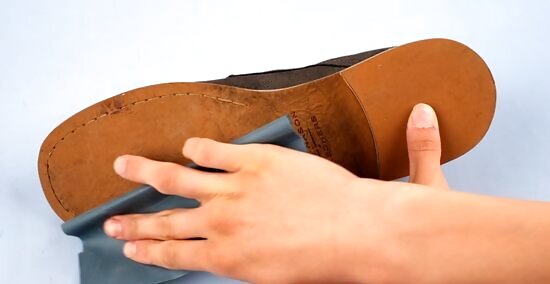
Medium-grit sandpaper is another abrasive surface that roughens up the soles of your shoes to improve their traction and grip. Simply get out a 50- to 100-grit piece of sandpaper and rub it onto the bottom parts of your shoes that touch the ground. Just keep rubbing the sandpaper until your soles and heels have a scuffed, textured appearance. Shoes with soles that have a cardboard-like texture tend to be resistant to sandpaper, so you may have to try 1 of the other methods below to make your shoes non-slip.
Scuff your soles and heels with a nail file.
If you don't have sandpaper on hand, a nail file or emery board works similarly to roughen up the soles and heels of your shoes. Just scrub a nail file against the smooth, flat bottoms of your shoes to give them texture. Coarse, metal nail files typically roughen up your shoes better than emery boards.
Spray your soles and heels with hair spray.
While hair spray keeps your hair in place, this sticky spray also helps your shoes grip the ground when you’re in a pinch. Simply coat the bottoms of your shoes with a thick, even layer of hair spray. Then, let it dry for about 1 minute before putting on your new, slip-resistant shoes! This solution is only temporary, as the hairspray’s stickiness eventually wears off. Hair spray rinses off with water, so you may have to reapply if it’s raining or you’re walking on wet surfaces. Opt for a different method if your shoes are made out of a delicate material like leather. The chemicals in hair spray might discolor or degrade your shoes. Spray the bottom of your feet with hairspray to keep your heels from slipping out of your shoes, too.
Put masking tape on the bottom of your shoes.
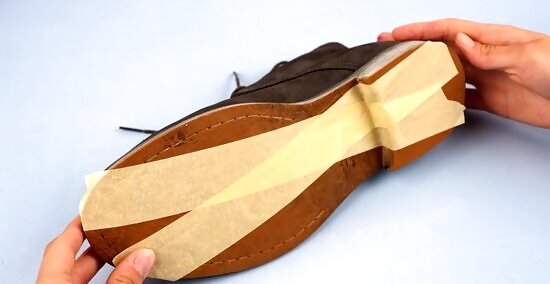
If you don’t want to permanently alter the bottoms of your shoes, both masking tape and adhesive bandages are great temporary, slip-resistant solutions. Either lay 2 strips of tape in an "X" pattern on the widest, flattest parts of your soles, or lay several bandages horizontally across your soles. The rough texture of these materials gives your shoes grip even on slick floors. Keep extra tape or bandages with you in case they come off as you’re wearing your shoes.
Attach grip pads onto your soles.
Whether you’re dealing with smooth soles on well-worn shoes or brand-new ones, grip pads are a more permanent way to improve their grip. Grip pads are made out of materials like silicone gel or rubber and designed with lots of small grooves that make them super slip-resistant. For most grips, simply peel off the adhesive on the pads and stick them onto the sole and heel of your shoe. Grip pads are not completely permanent and eventually wear out or come off. Simply apply a new pair to keep your shoes slip-resistant. When grip pads come off, they can sometimes leave behind a sticky residue. Just wipe away any stickiness with rubbing alcohol.
Apply traction spray onto your soles and heels.
Grip or traction sprays work similarly to hair spray, except they are specially formulated to use on the bottoms of your shoes. For most products, simply apply the spray on your soles, let them dry, and then put on your shoes.
Cover the soles of your shoes with puff paint.
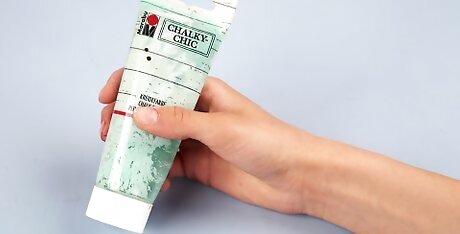
Puff paint isn’t just for crafts—this 3-dimensional paint turns rough and textured when it dries, making it the perfect material to improve your shoes’ grip. Just get out a tube of puff paint and create several zig-zag or squiggly lines horizontally across your soles and heels. Let the paint dry for about 4 hours and then put on your shoes. Puff paint paint isn’t a permanent solution and eventually comes off as you wear your shoes. Simply reapply it when your shoes start to feel slippery again. Feel free to get creative with your designs! Draw shapes, create a scenic landscape, or even write words on the bottom of your shoes to add texture. If you don’t have puff paint, hot glue is a great alternative.
Cover your soles with sand or salt.
The rough texture of both salt and sand adds a coarseness to the bottoms of your shoes that make them more grippy. Simply apply an adhesive spray or glue to the soles and heels of your shoes. Then, dip the bottoms of your shoes into either salt or sand. Let the adhesive dry and then you’re ready to wear your shoes!
Put on ice grips.
Wearing ice grips helps prevent slips and falls on snow and ice. Most ice grips have metal bolts or cleats on the bottom that stick into slick, icy surfaces and help you keep your balance. The grips are typically easy to put on and simply hook onto your sneakers or boots like a harness.
Wear and break in your shoes.
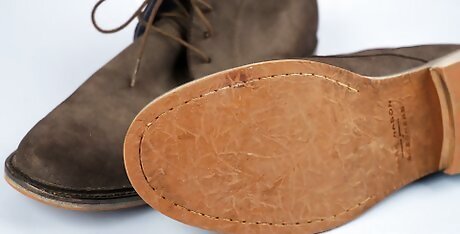
If you don’t want to use a DIY solution to make a new pair of shoes non-slip, simply wear them as much as possible. Walking around and breaking them in softens the soles and adds texture to improve their grip. After several days to weeks of solid wear, your shoes will feel less slippery. Bring a pair of slip-resistant shoes with you when you’re breaking in a very slippery pair of shoes. If you come across slippery surfaces, like wet floors, switching out your shoes prevents you from falling.
Visit a cobbler to fix slippery shoes.

If you have a pair of shoes that are expensive or you treasure too much to alter on your own, take them to a cobbler or shoe repairer. Cobblers are professionally trained to replace or repair soles and heels to add texture and improve their grip. Taking your shoes to a cobbler is not the cheapest way to fix your shoes. Depending on the quality of your shoes and the difficulty of repairing them, a single pair of shoes can cost $50 or more.
Look for non-slip shoes when you’re shopping.
Choose non-slip shoes to prevent slippery soles in the first place. When you’re shopping for new shoes, try them on and inspect their bottoms to make sure they’re not slippery. For instance, rubber soles and thick grooves tend to make shoes less slippery. Then, check the labels on shoe boxes, as many boots and athletic sneakers are marked as slip-resistant. Buying and wearing slip-resistant shoes is especially important if you work in the food service or cleaning industries, as slips tend to be more common. Shoes are classified as slip-resistant based on their coefficient of friction (CoF), which is the ratio of force needed to move 2 sliding surfaces over each other. In general, shoes with a CoF of 0.4 and greater are regarded as non-slip.



















Comments
0 comment